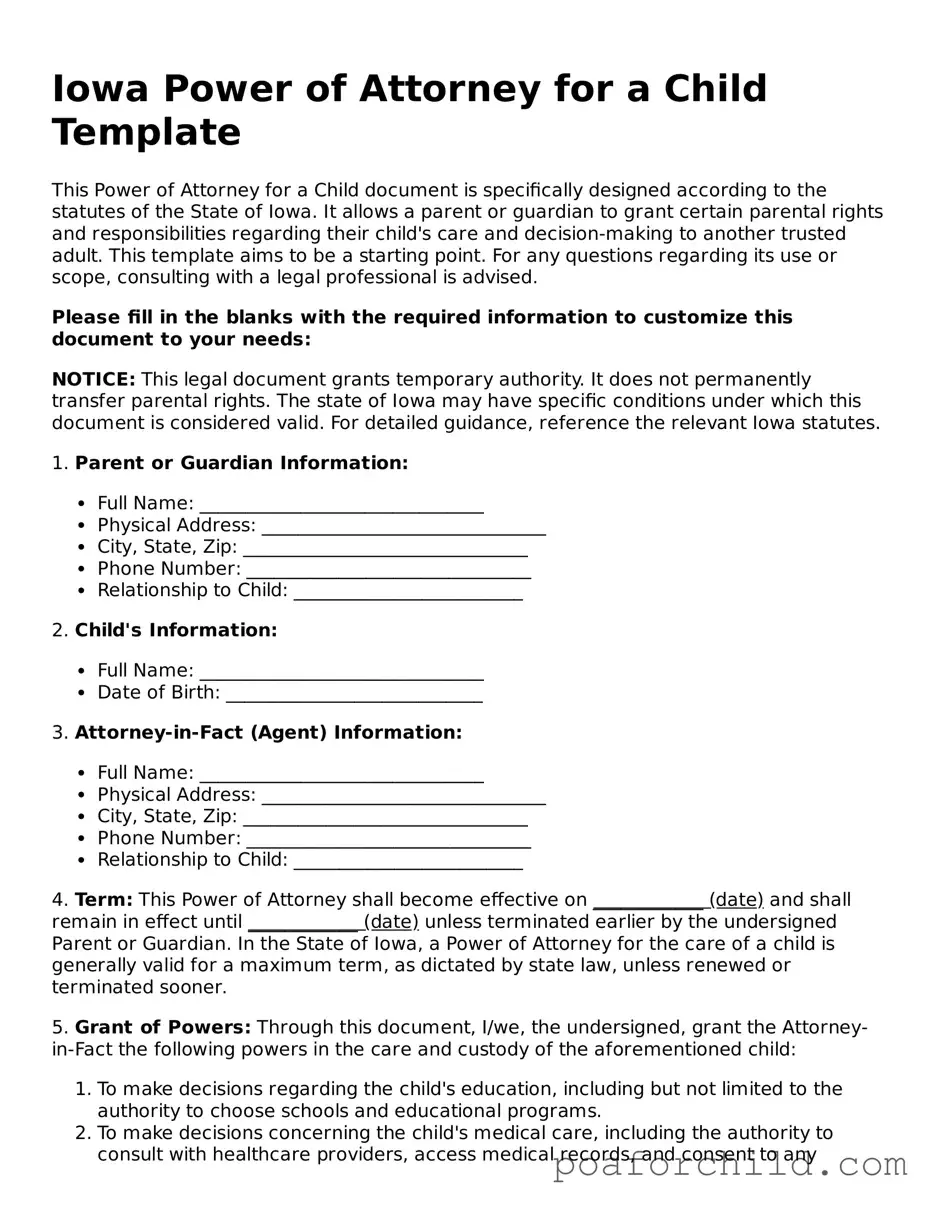Detailed Guide for Using Iowa Power of Attorney for a Child
Filling out the Iowa Power of Attorney for a Child form is a valuable step for parents or guardians looking to legally grant another individual the authority to make decisions on behalf of their child. This could be necessary for a variety of reasons, such as if the parent or guardian will be out of town, undergoing medical treatment, or otherwise temporarily unable to care for their child. The form is designed to be straightforward, but it's important to follow each step accurately to ensure that the power of attorney is legally valid. Here’s how to complete the form correctly.
- Start by obtaining the official Iowa Power of Attorney for a Child form. This can typically be found online through the Iowa state government’s website or by contacting your local family court.
- Fill in the date the power of attorney will begin at the top of the form. Make sure it’s clearly written to avoid any confusion about when the authority begins.
- Enter the full legal names of the parent(s) or guardian(s) granting the power of attorney, as well as their contact information, including address, phone number, and email.
- Provide the full legal name of the child or children the power of attorney will cover. If there are multiple children, include information for each child as specified by the form.
- Identify the person who will be granted the power of attorney, often referred to as the agent. Include their full legal name, relationship to the child, and contact information.
- Detail the specific powers being granted to the agent. This might include decisions related to the child's education, health care, and everyday needs. Be as clear and specific as possible to ensure there are no misunderstandings.
- Specify any powers that are not being granted to the agent, if applicable. This section helps to set clear boundaries on the agent's authority.
- Indicate the duration of the power of attorney. State whether it is for a fixed period or until a specific event occurs, such as the return of the parent or guardian.
- Both the parent(s) or guardian(s) and the designated agent must sign the form in the presence of a notary public. Ensure this is done to formally notarize the document and give it legal standing.
- Finally, make sure to distribute copies of the signed and notarized form to relevant parties. This includes providing a copy to the agent, keeping one for your own records, and possibly submitting a copy to the child's school or healthcare provider.
By carefully following these steps, parents or guardians can create a valid power of attorney for the care of their child. This document plays a crucial role in ensuring the child's needs are met when the parent or guardian cannot be present. It’s a process underlined by the significance of legal, emotional, and practical considerations, making the careful completion of the form all the more important.
